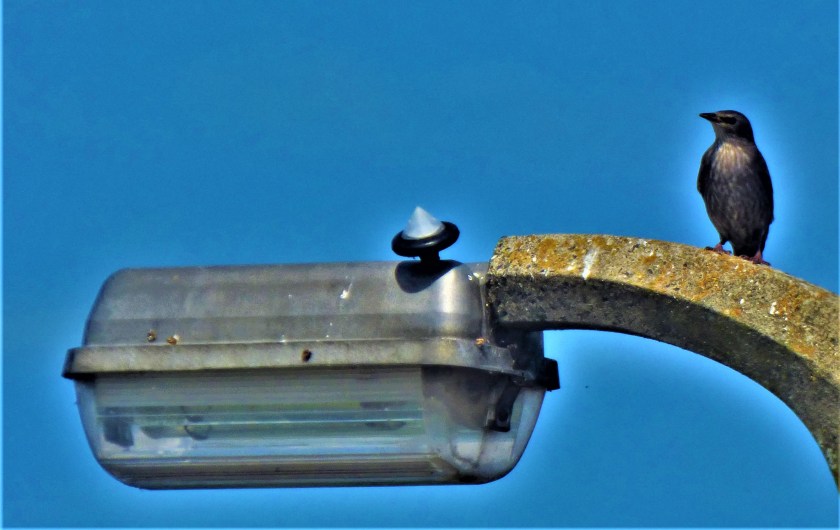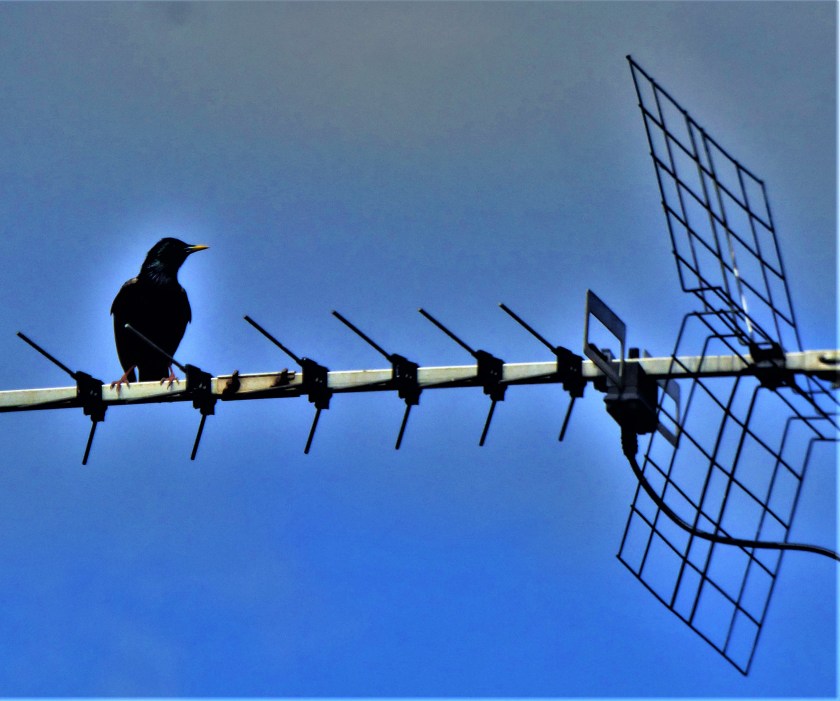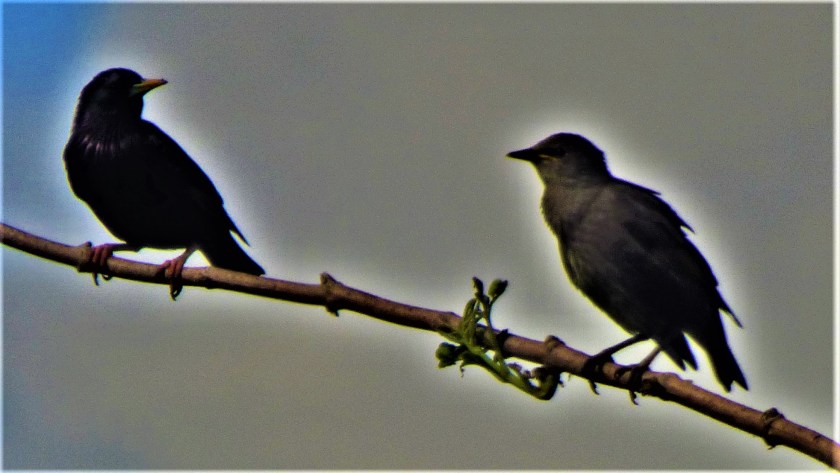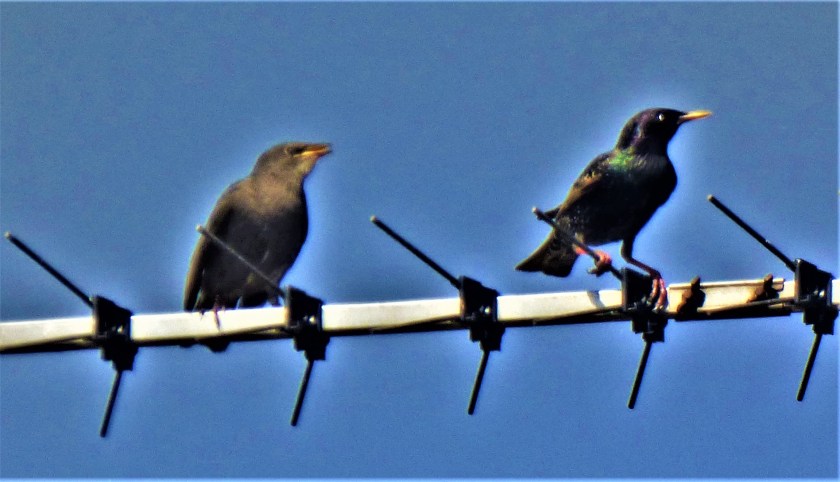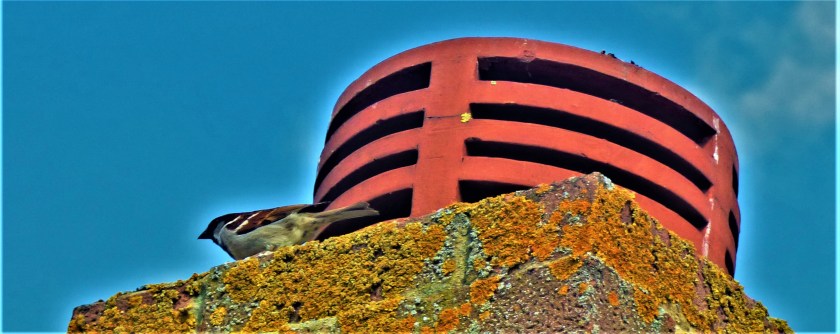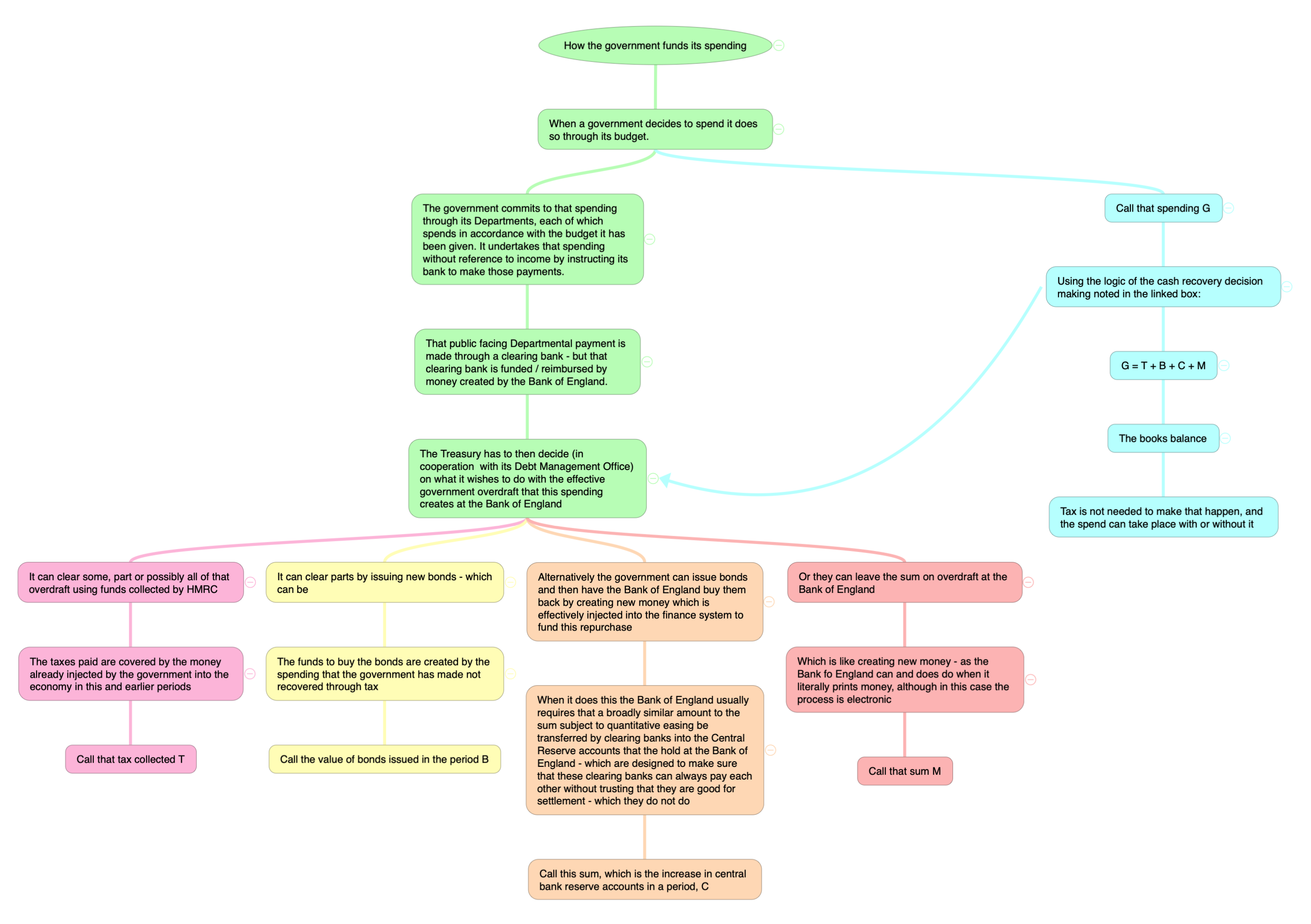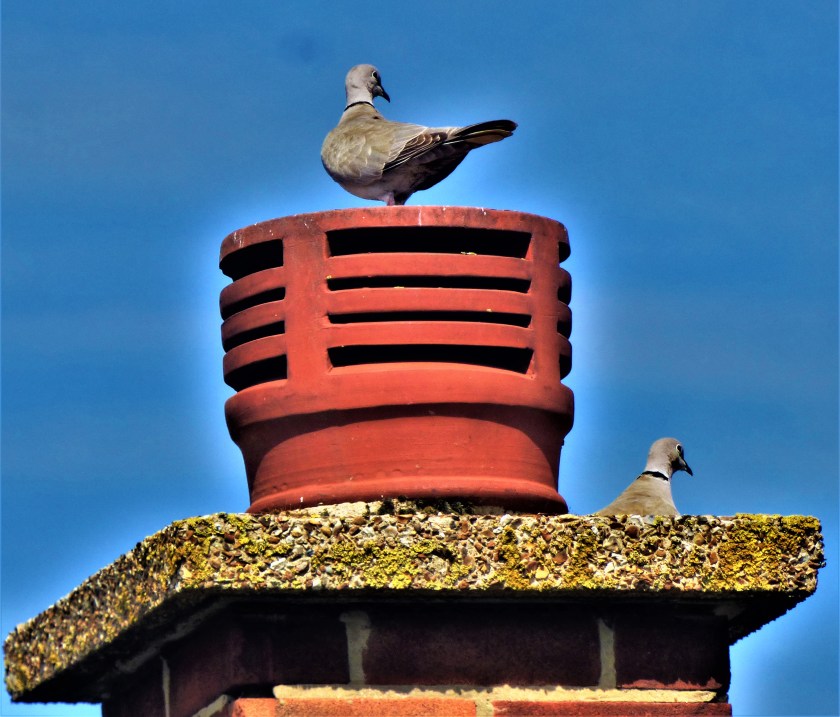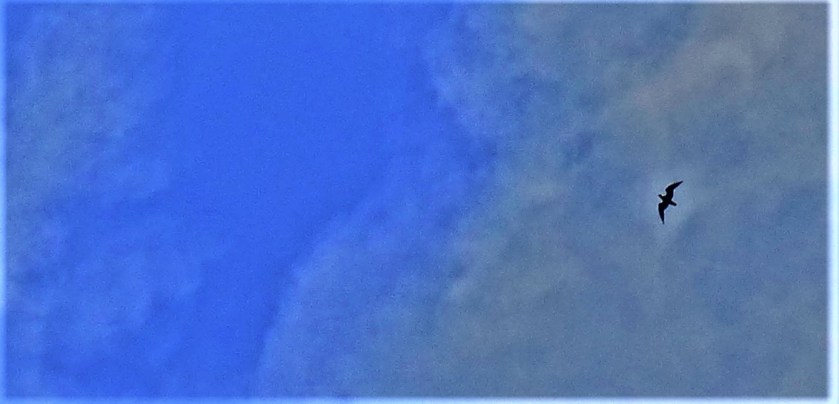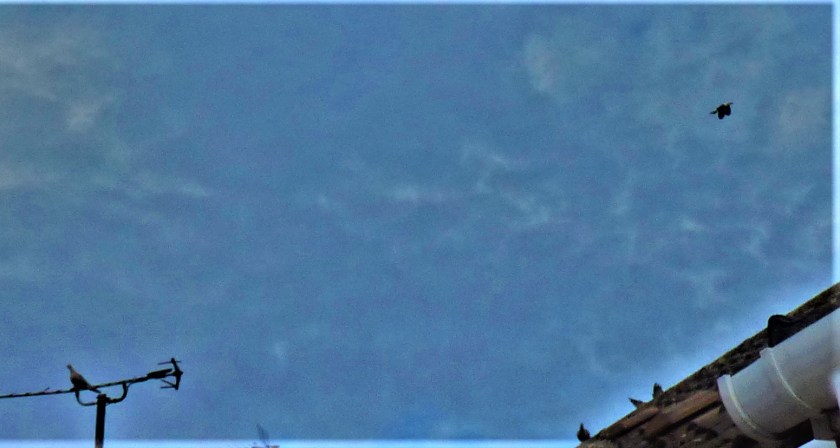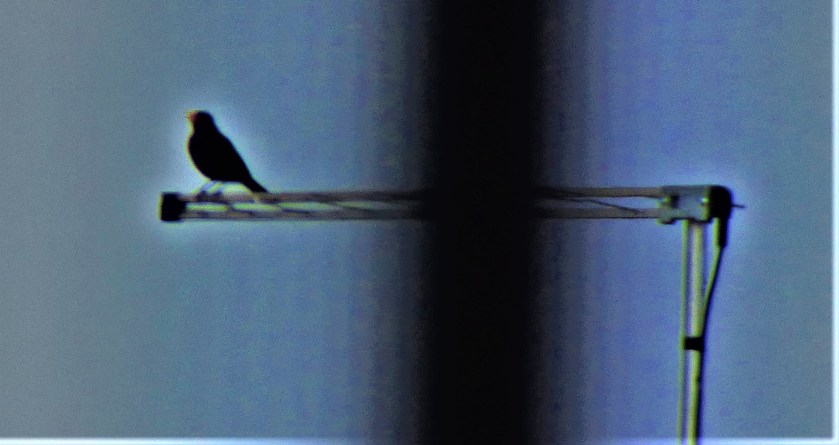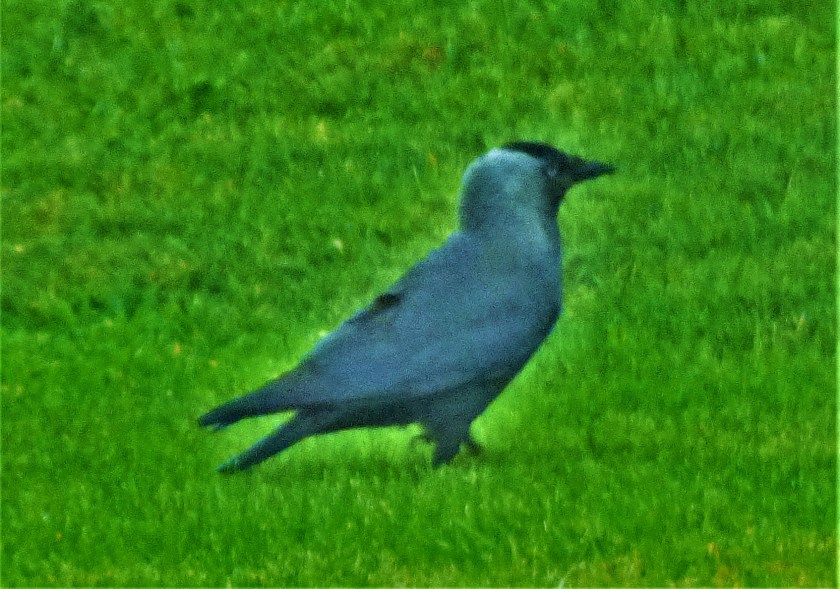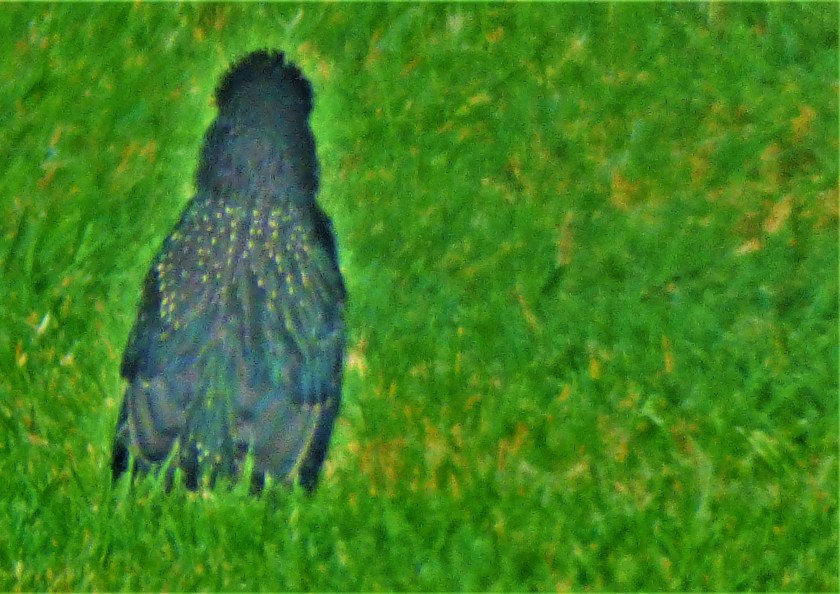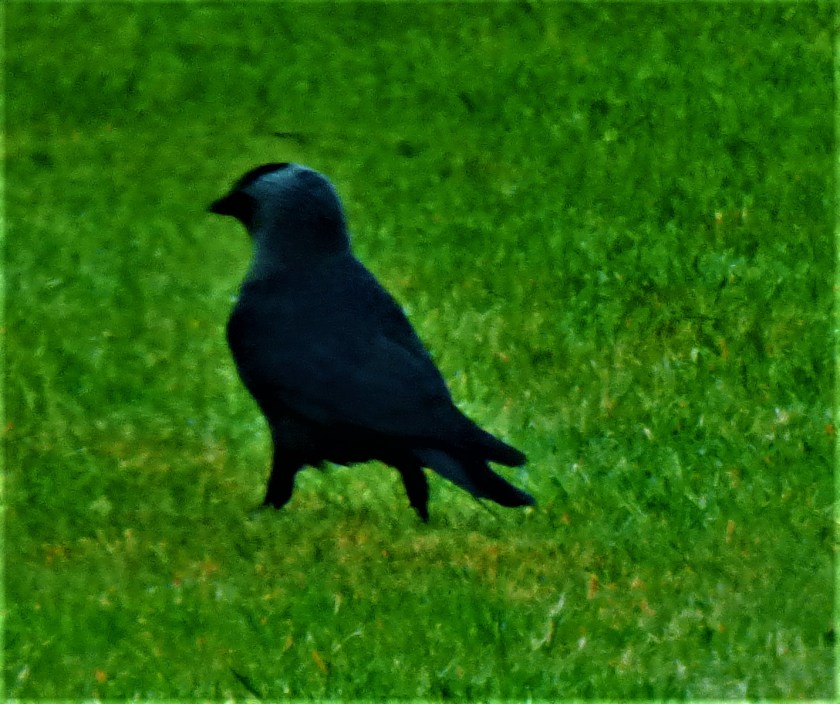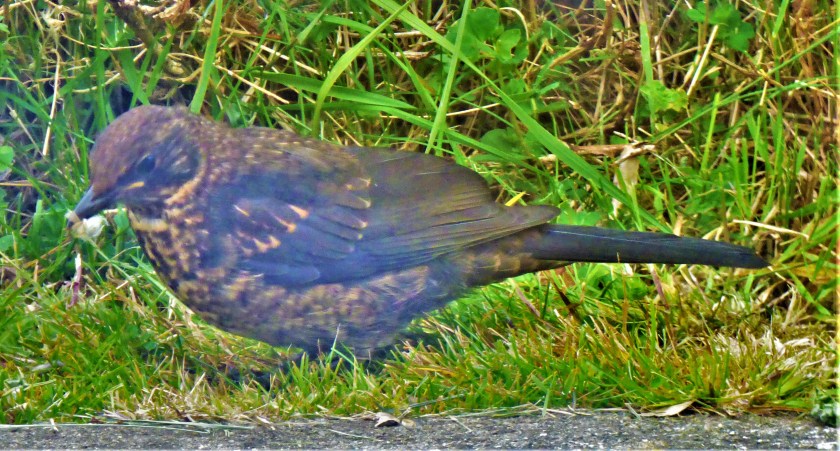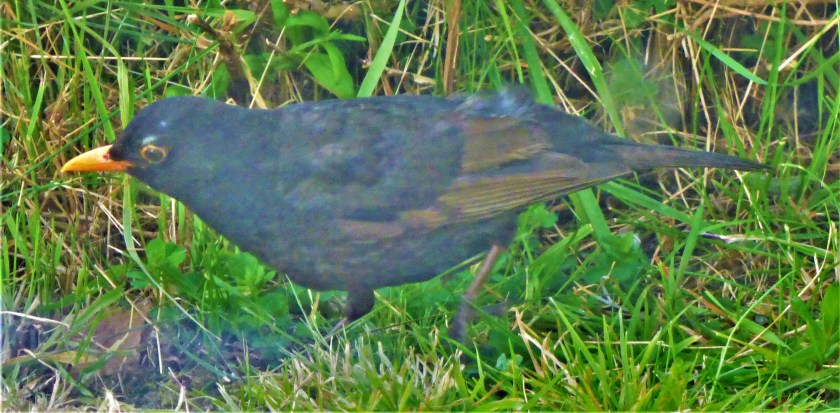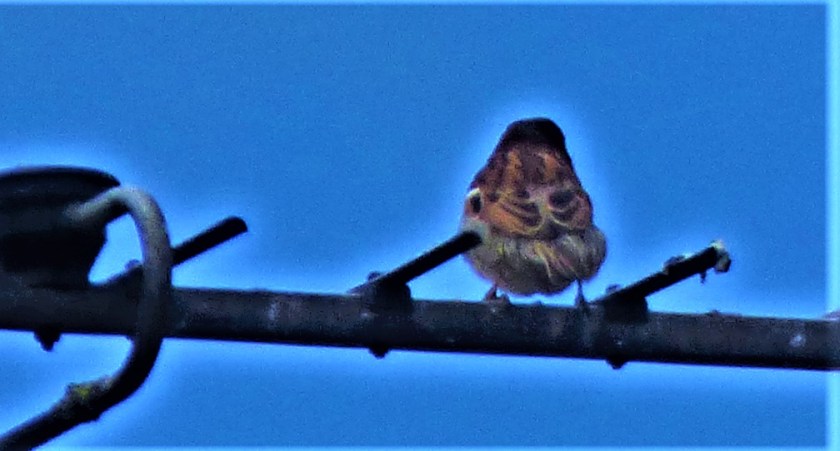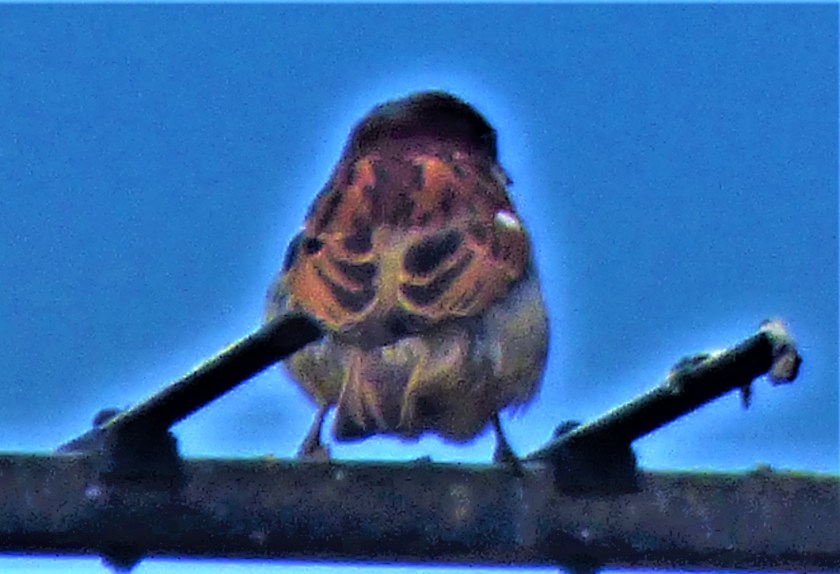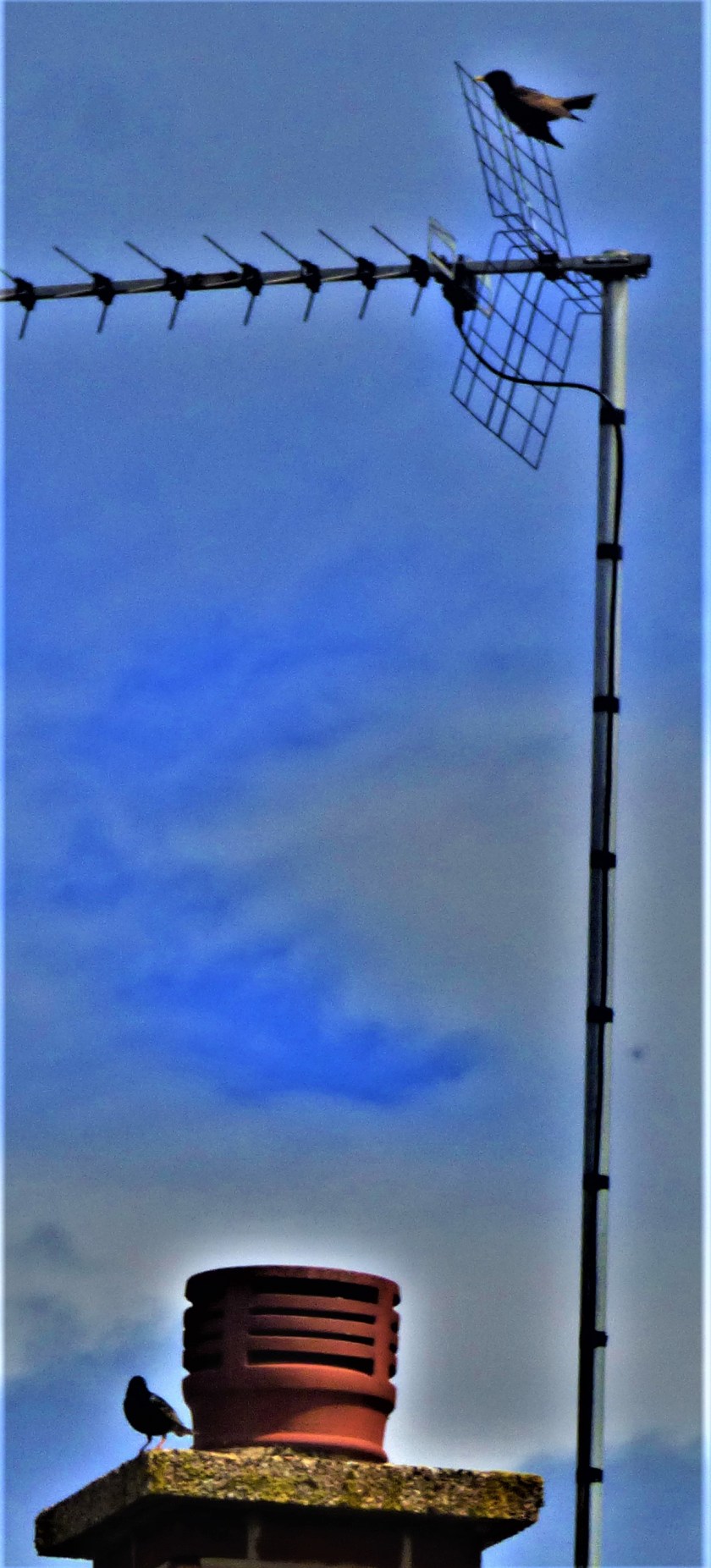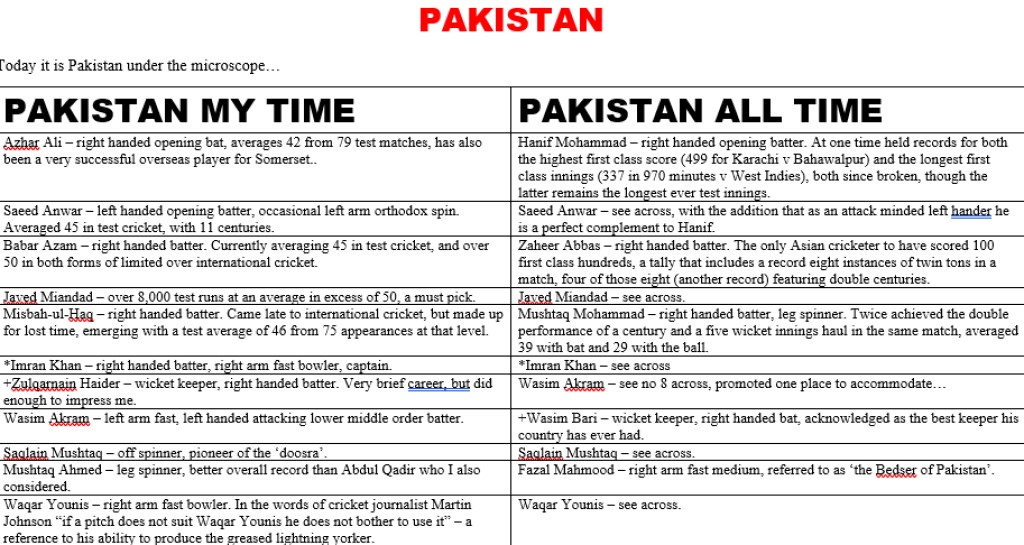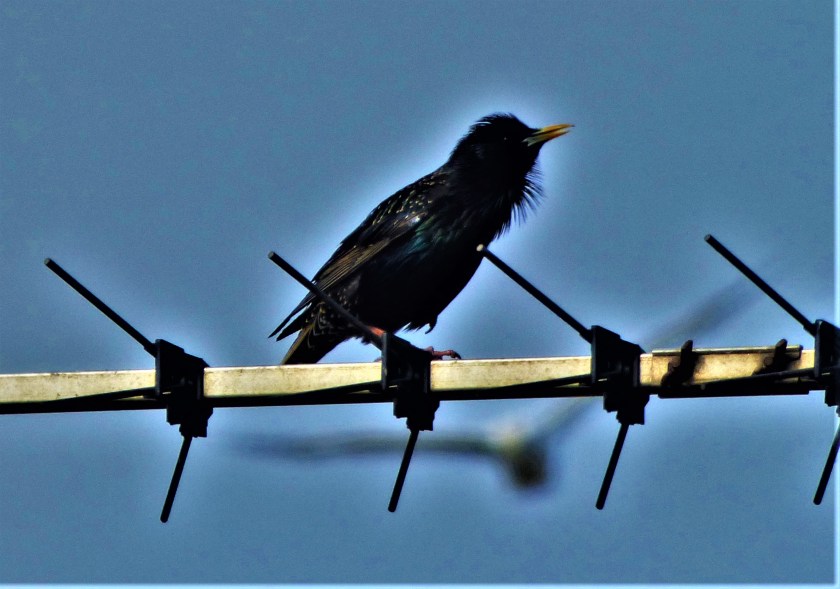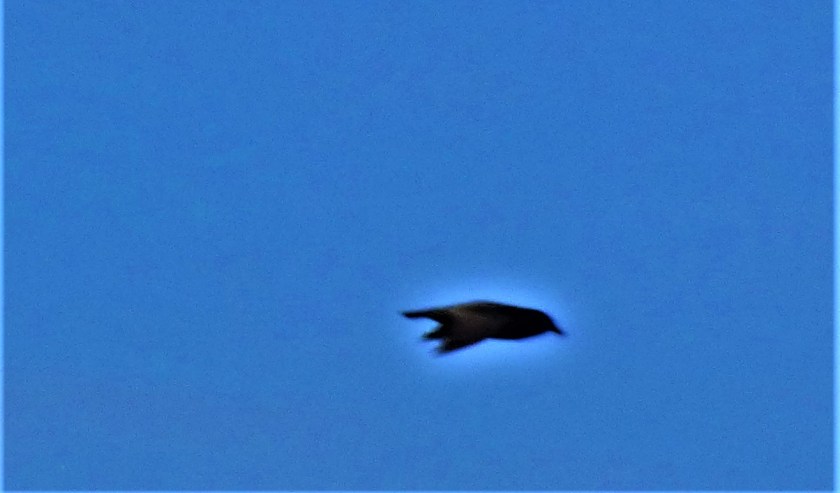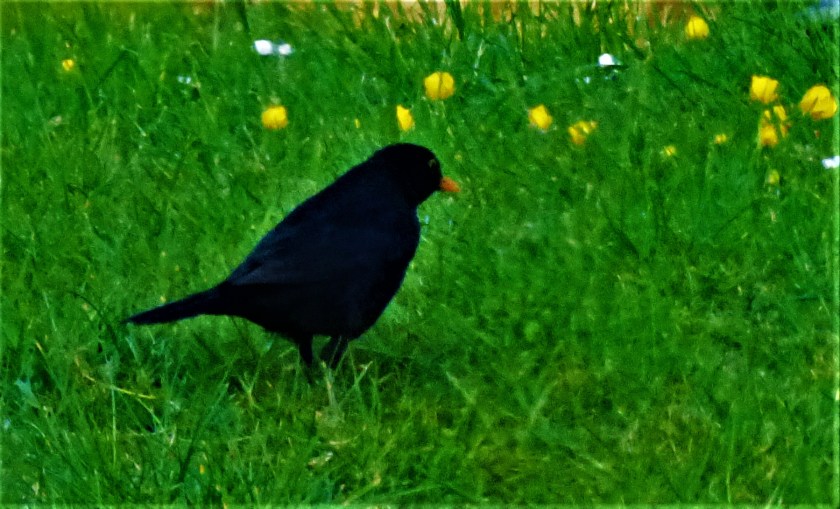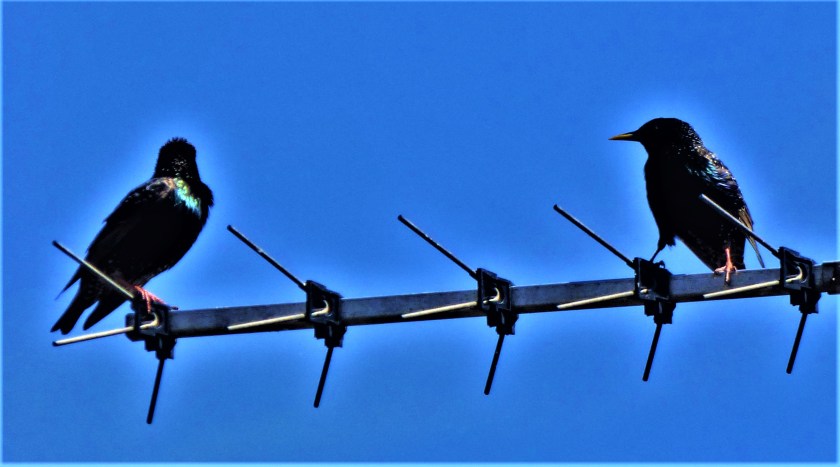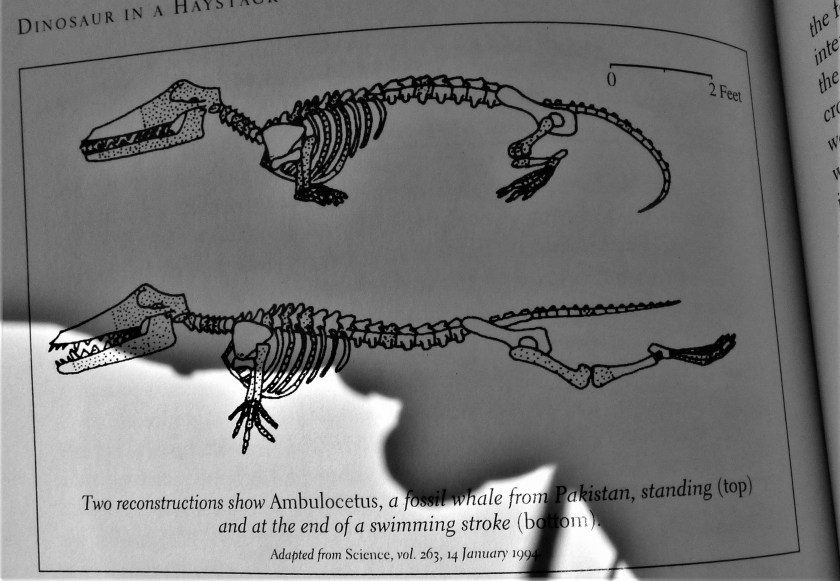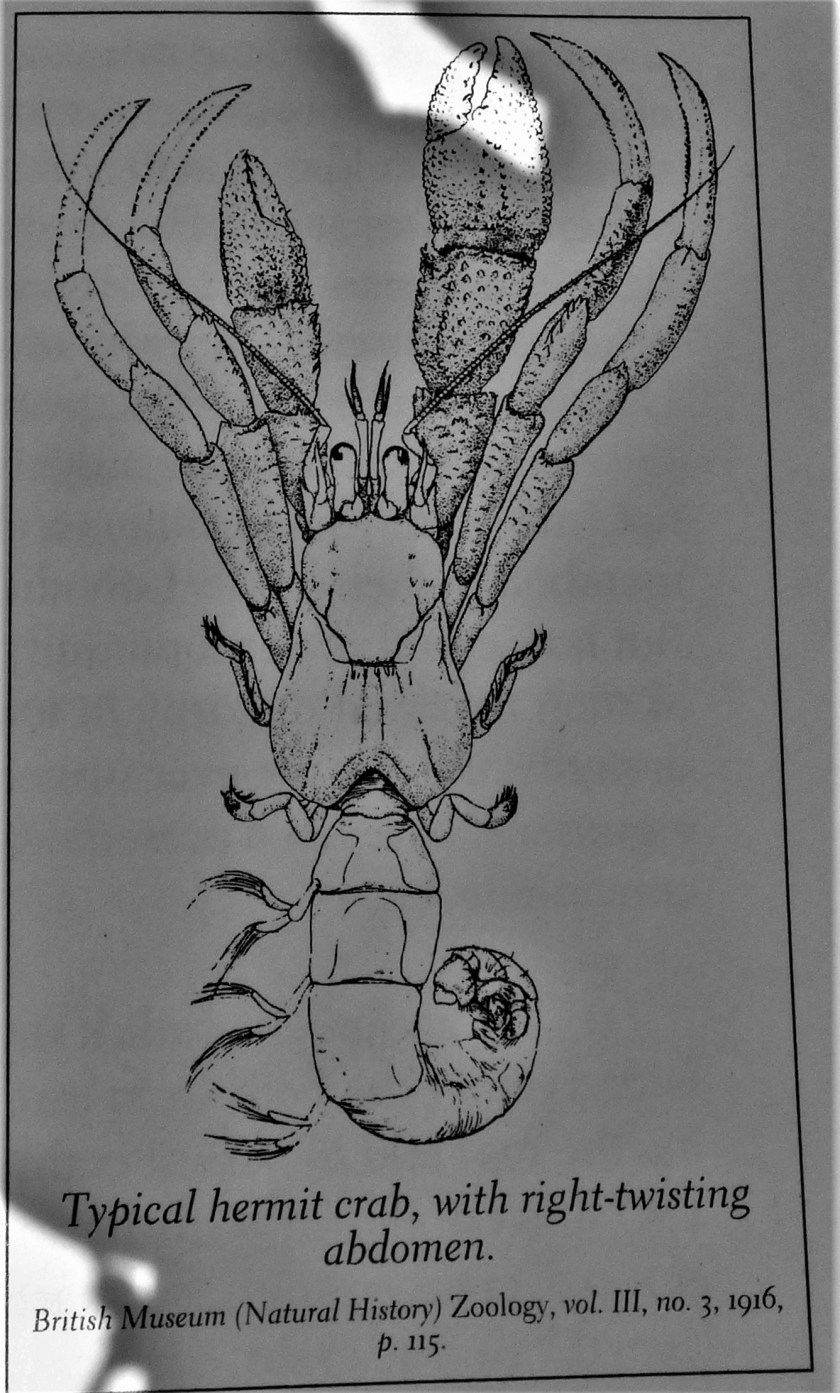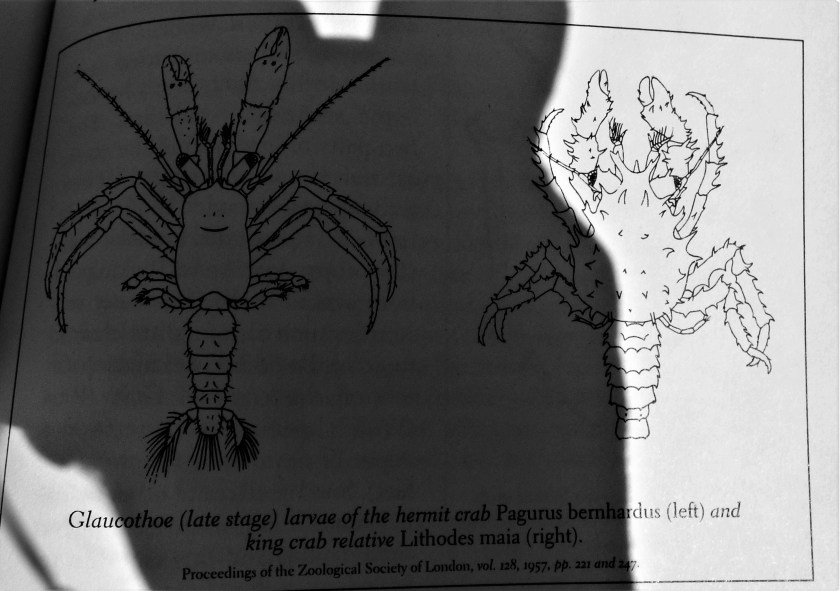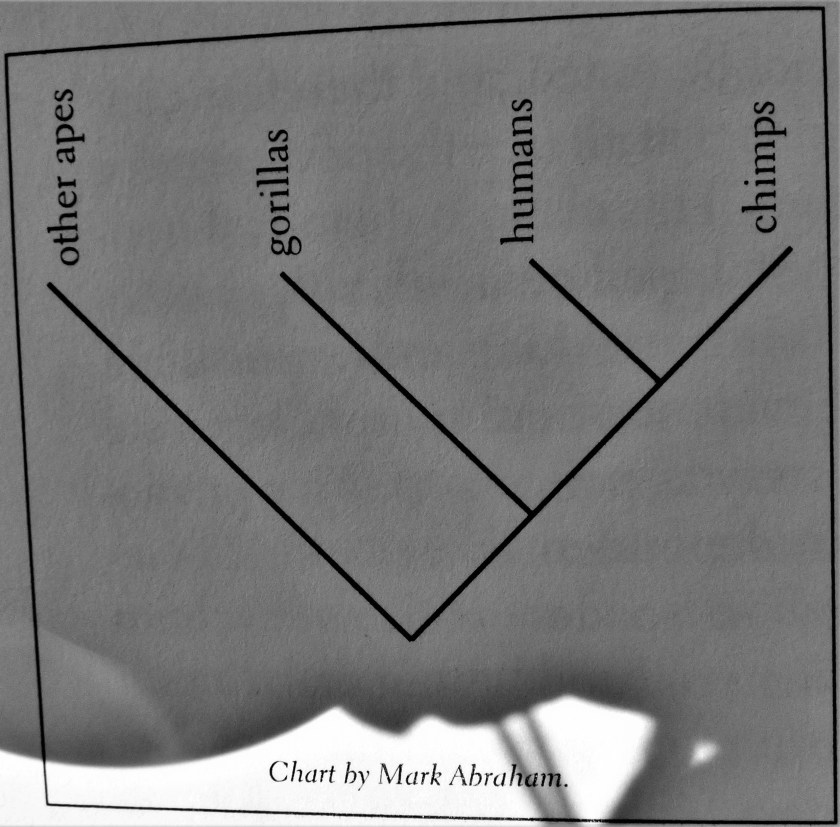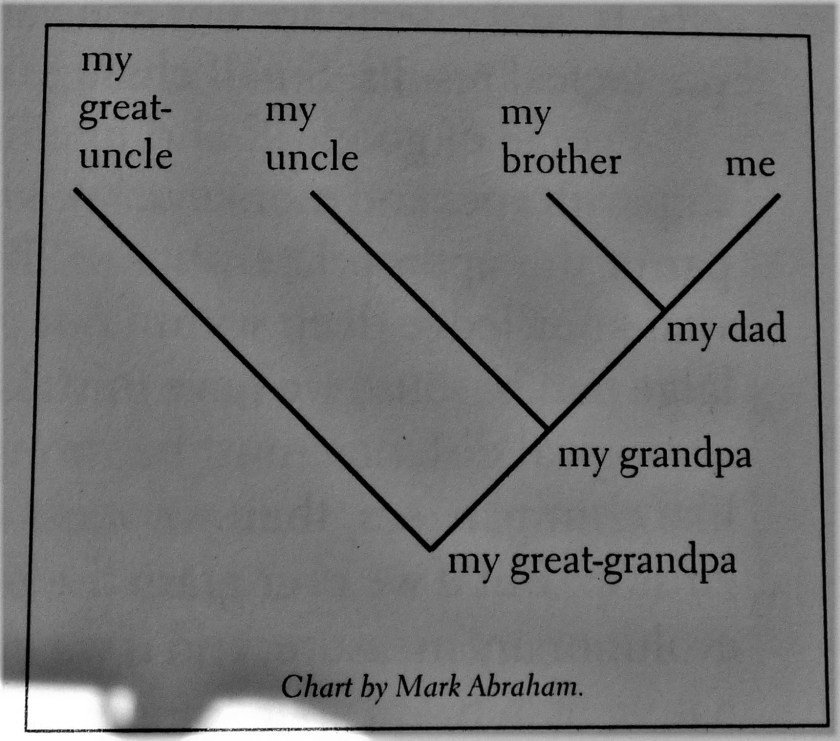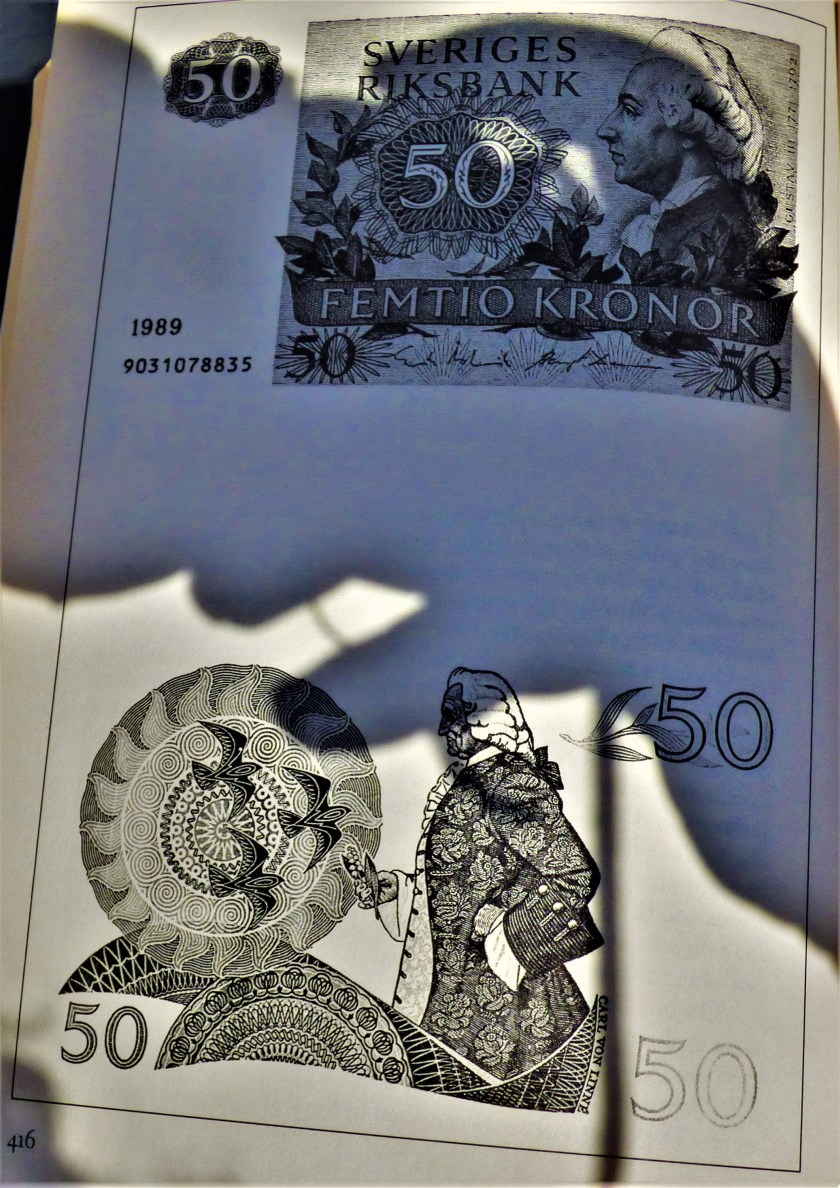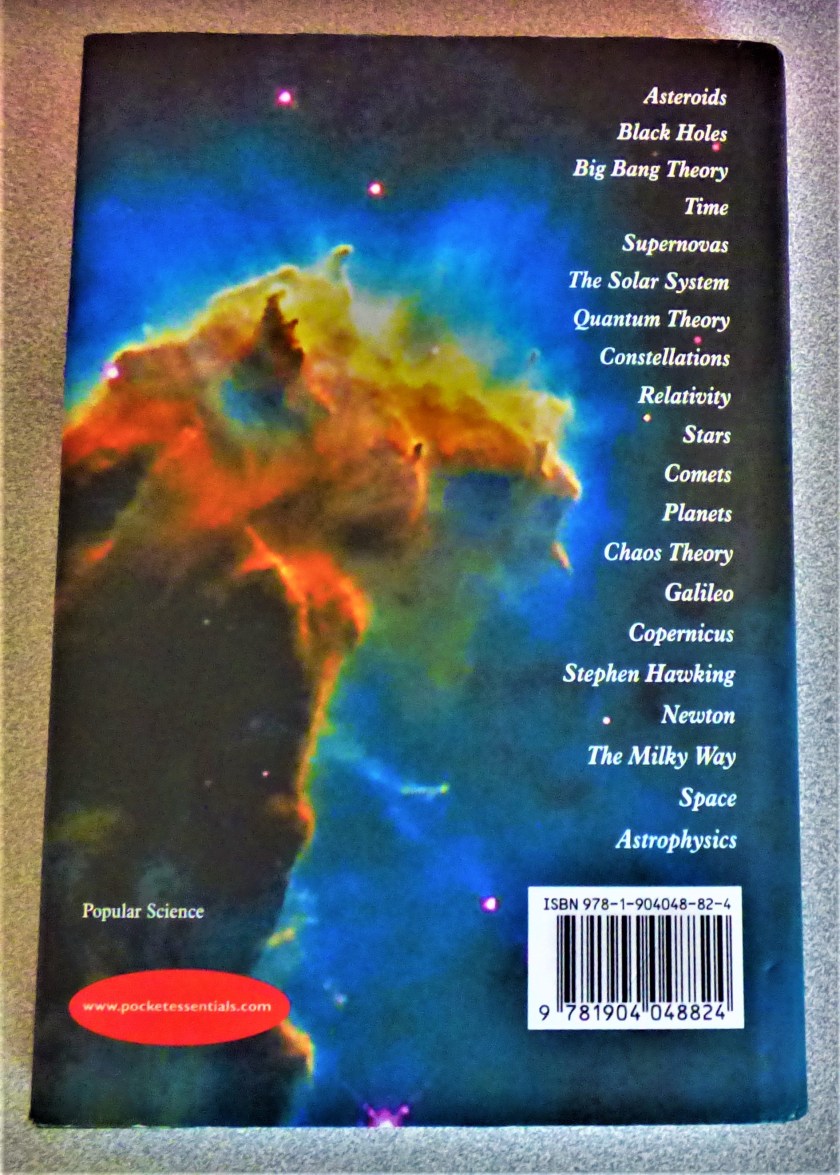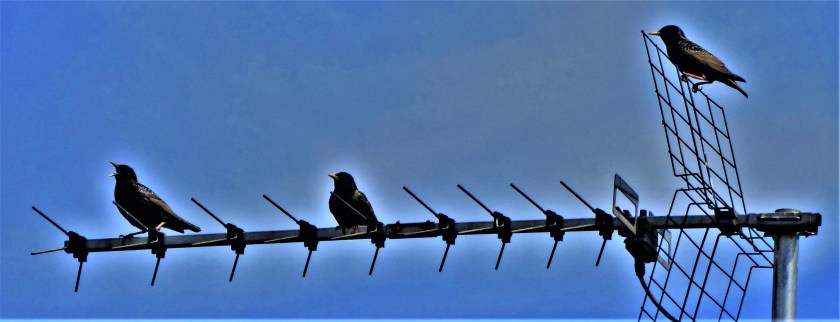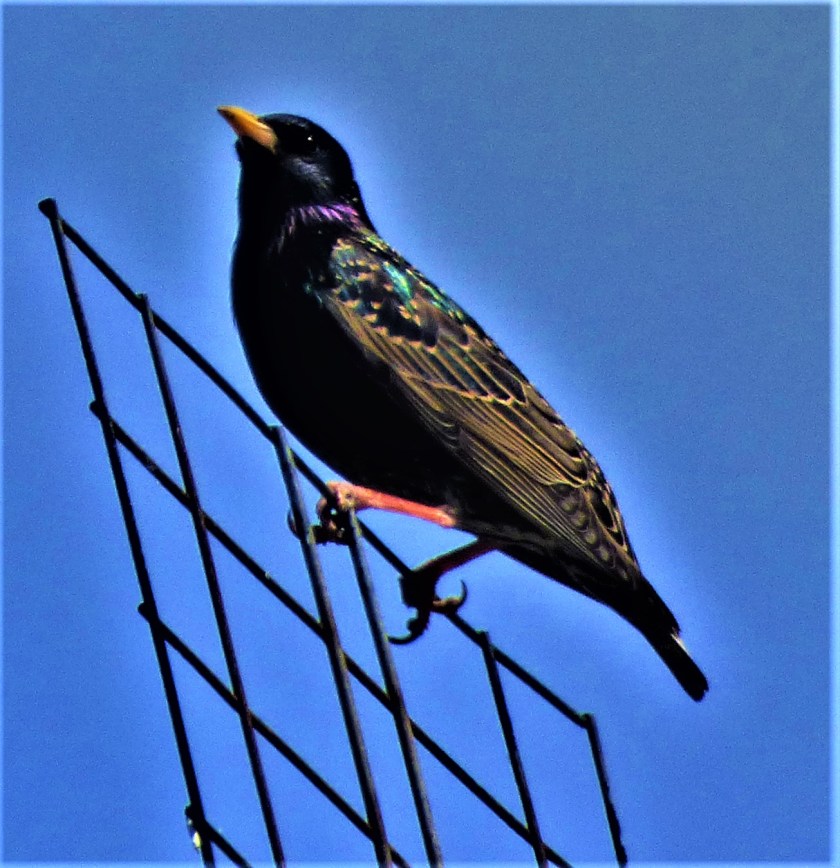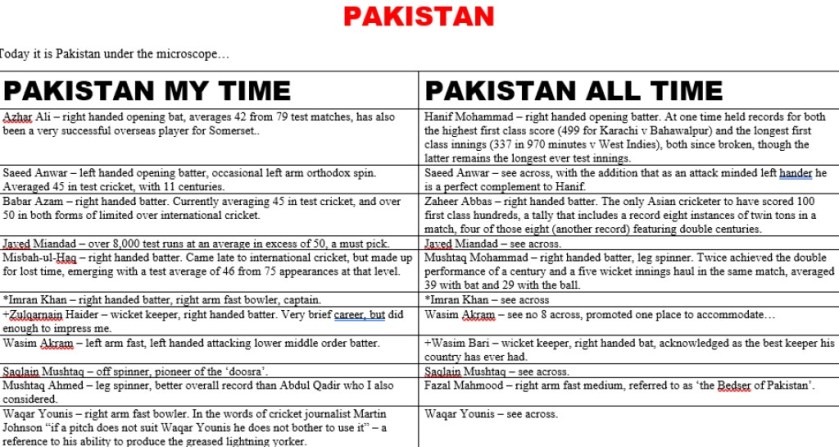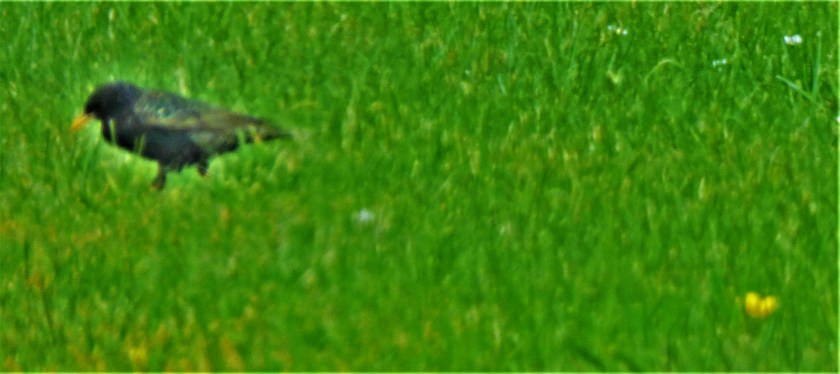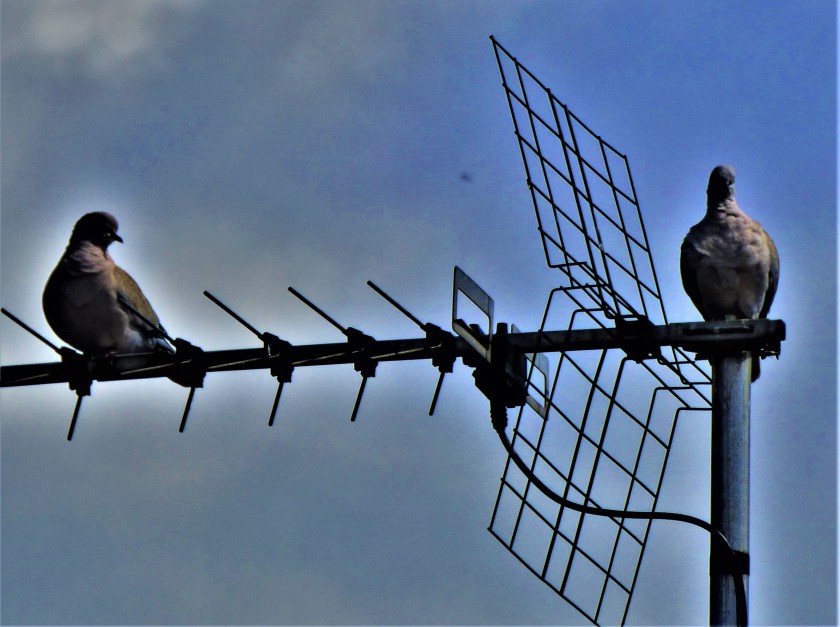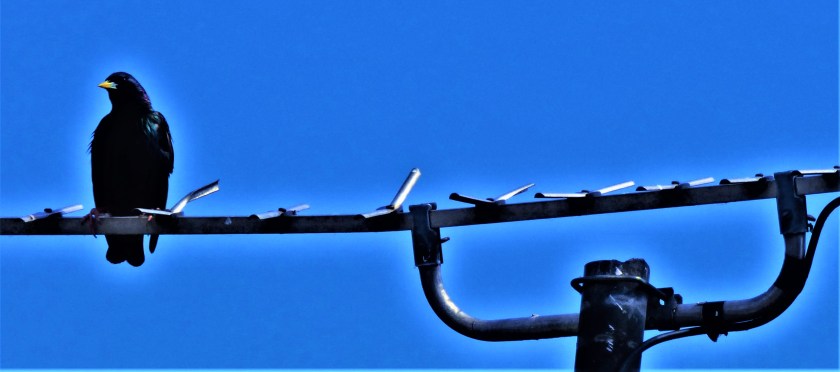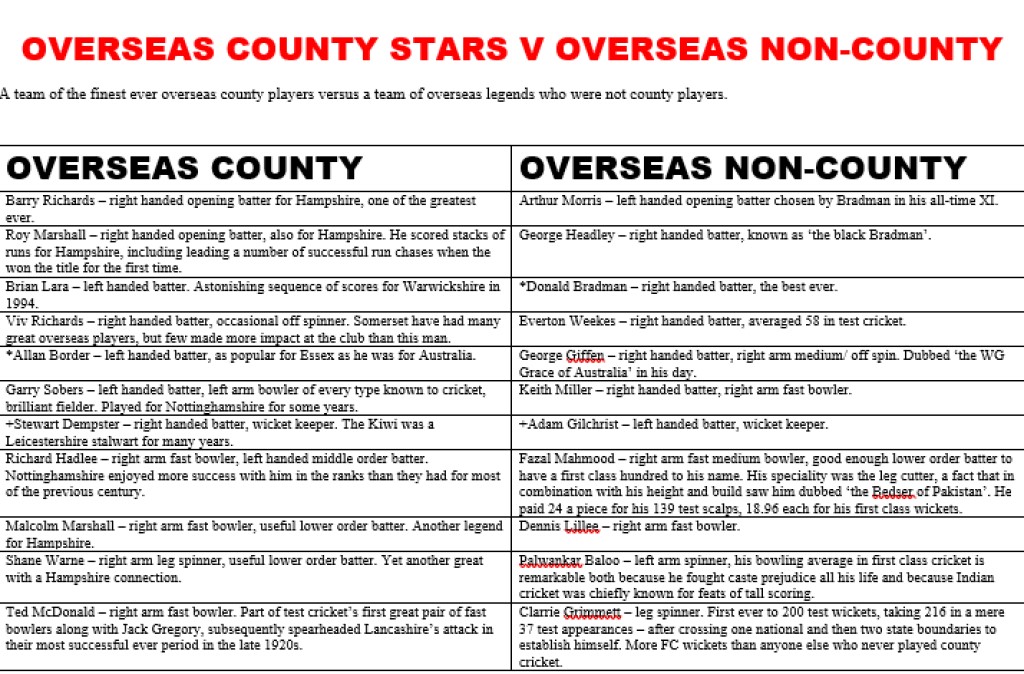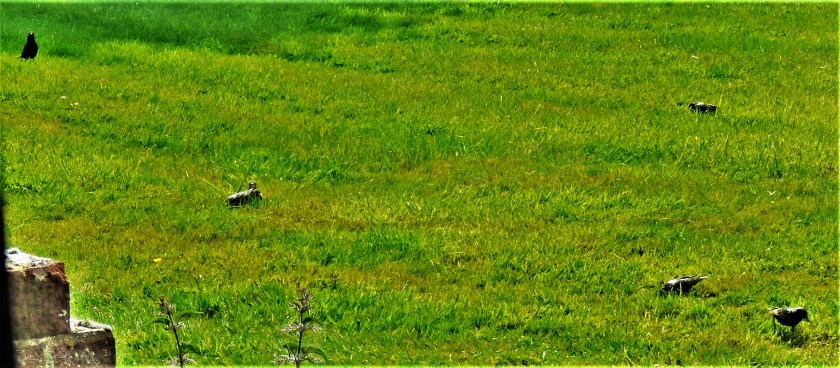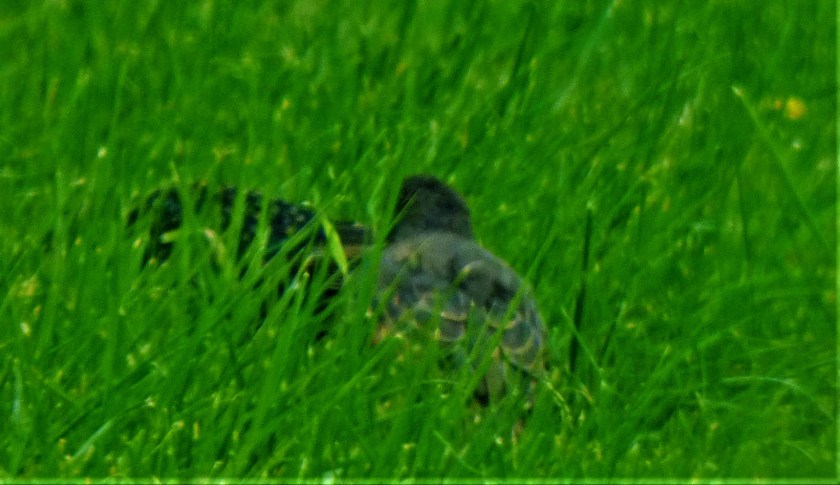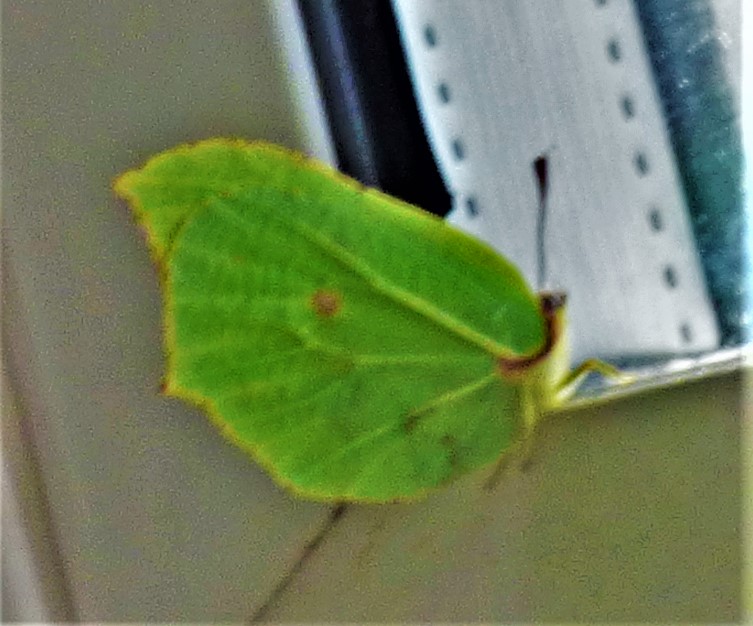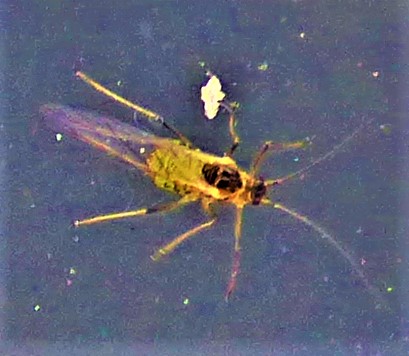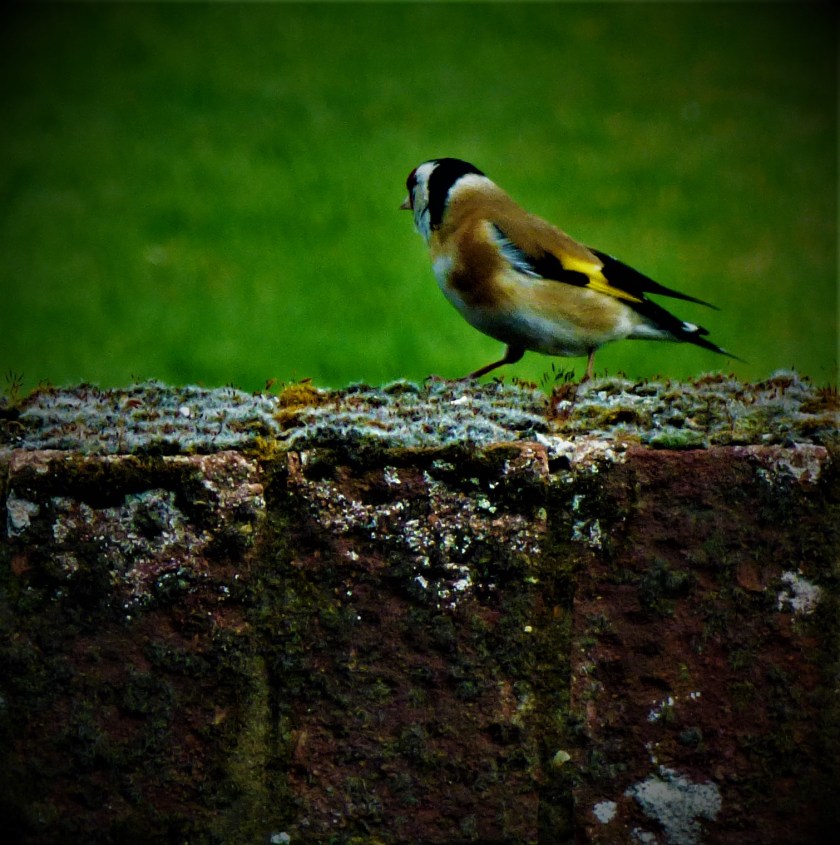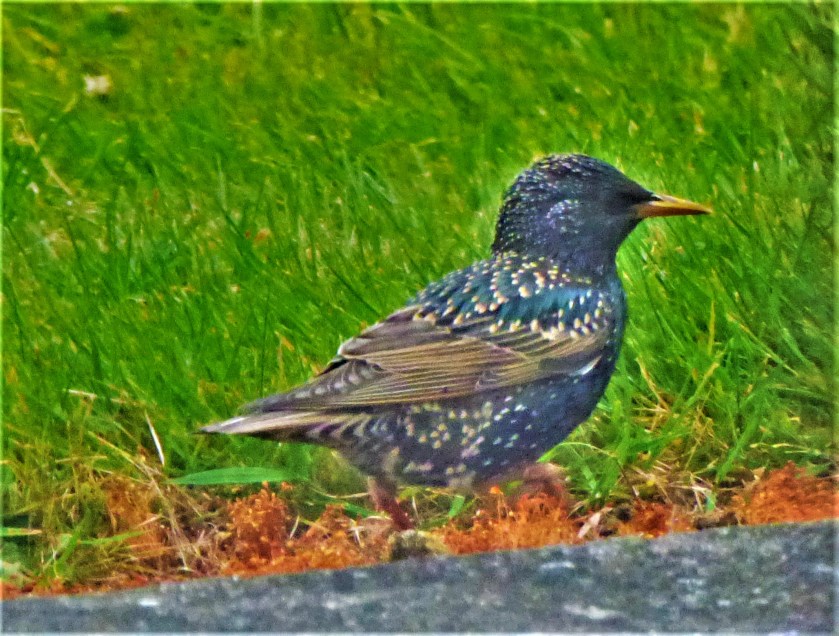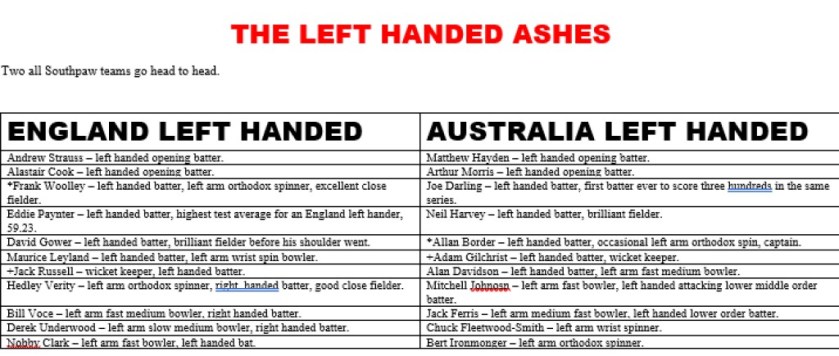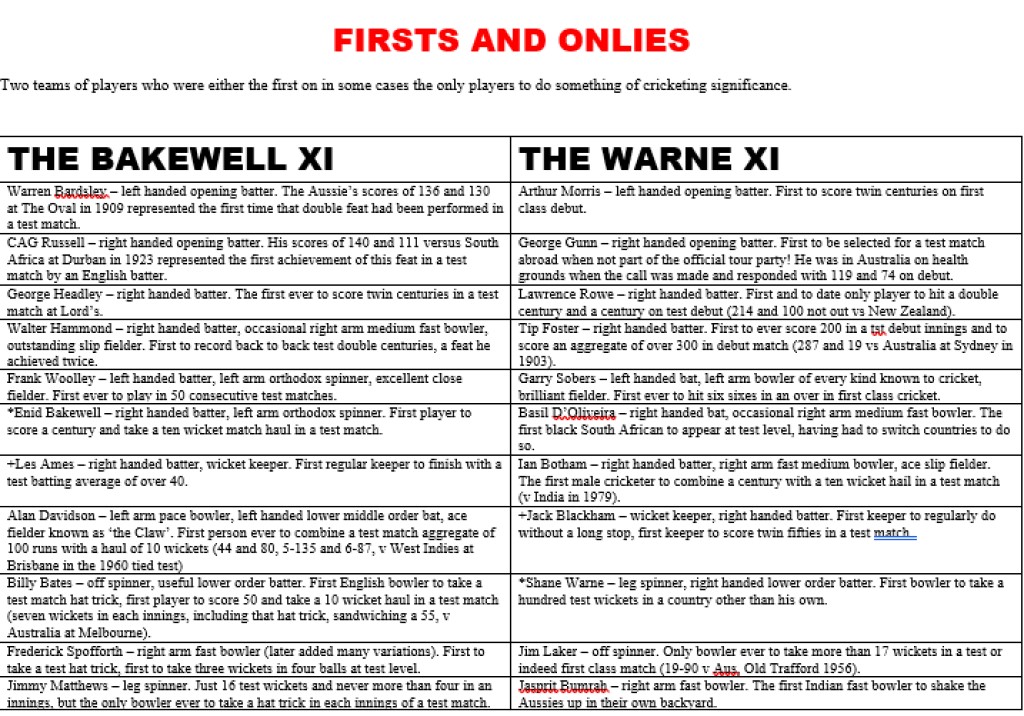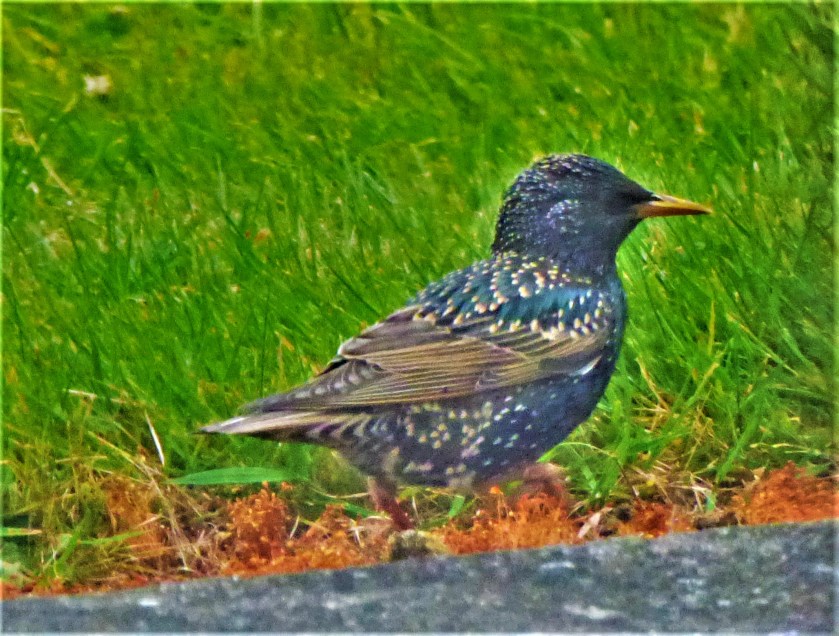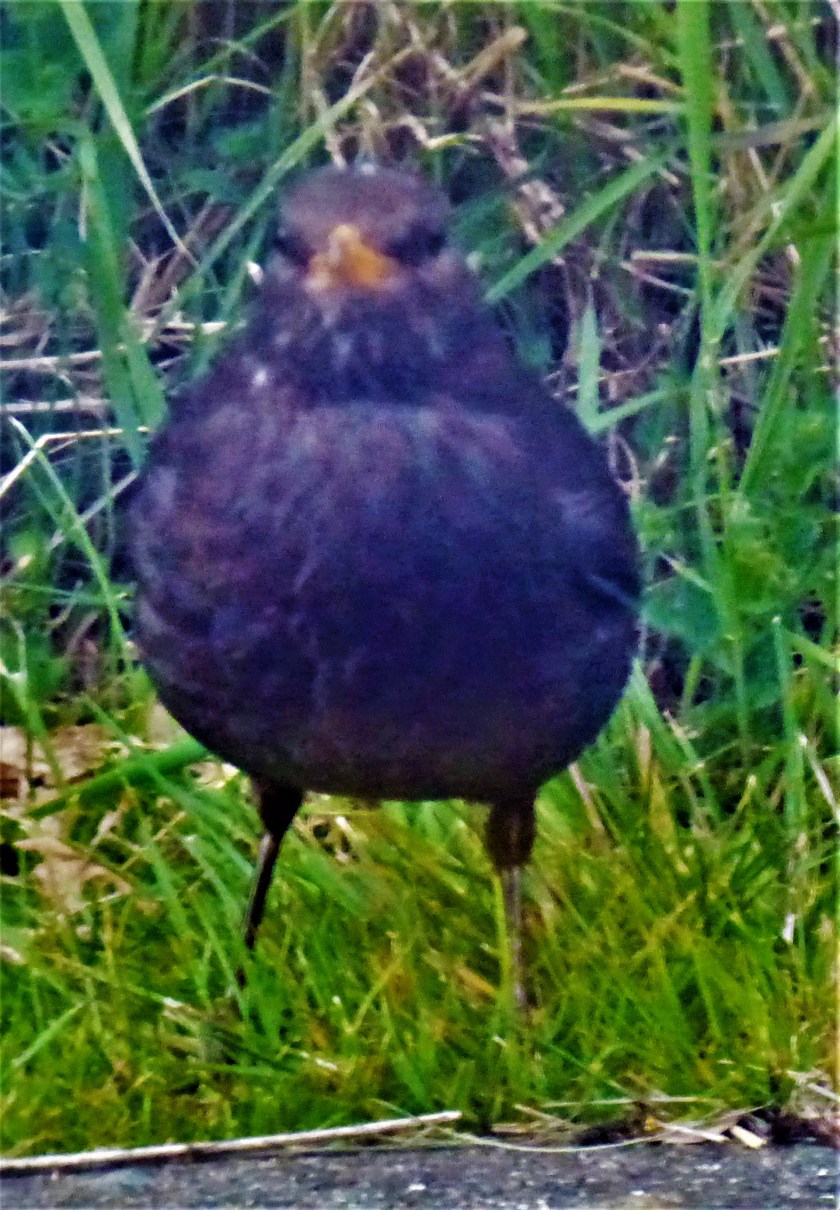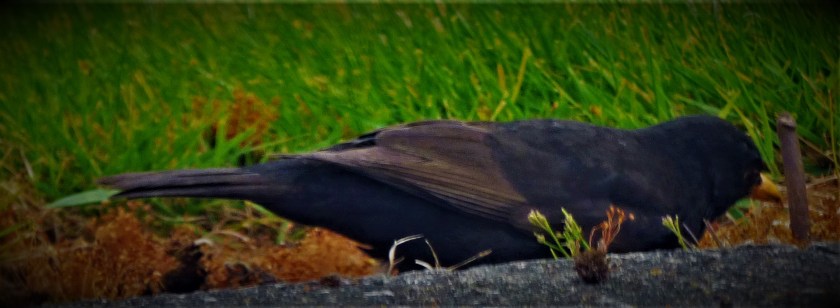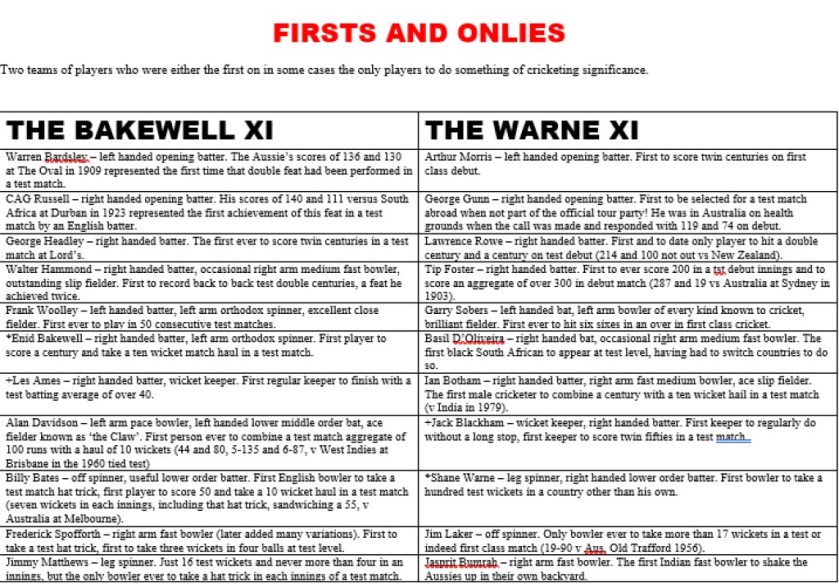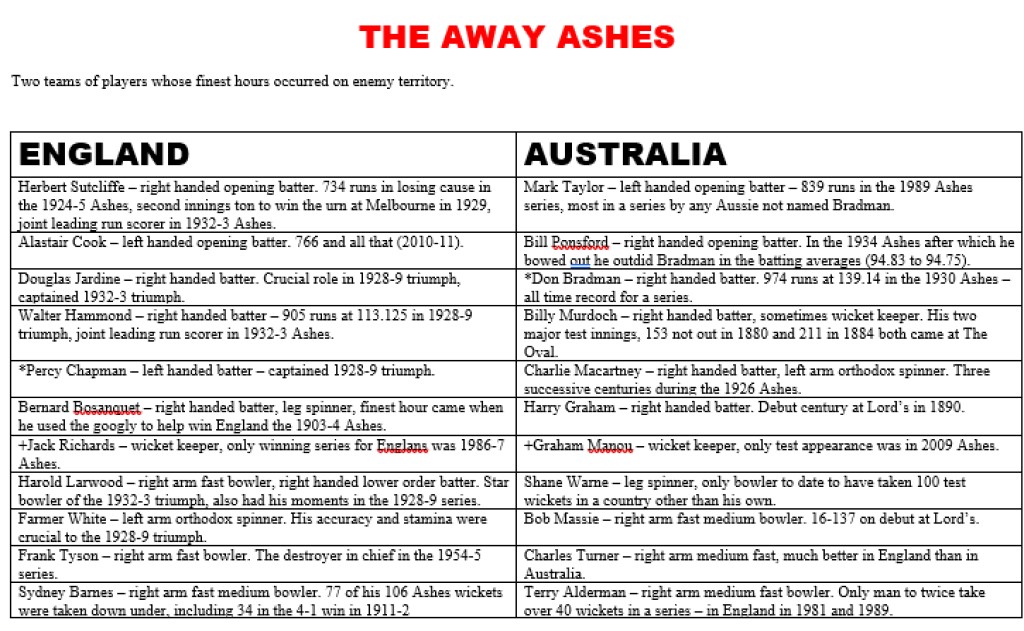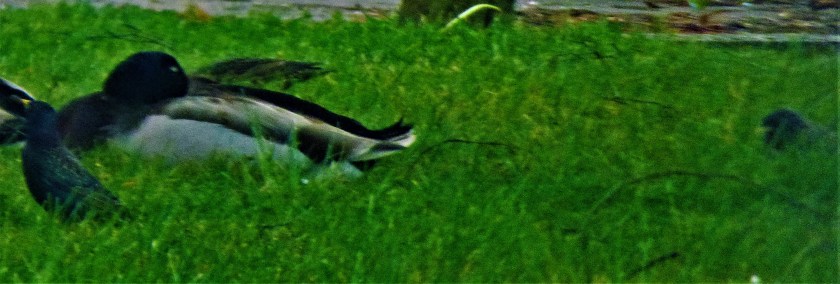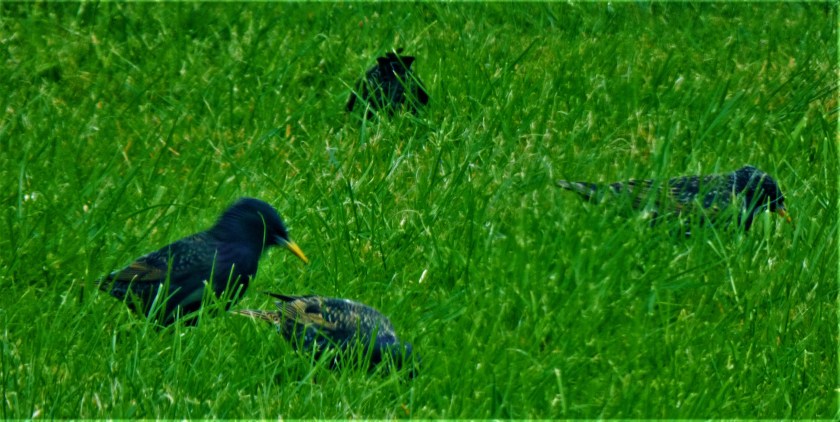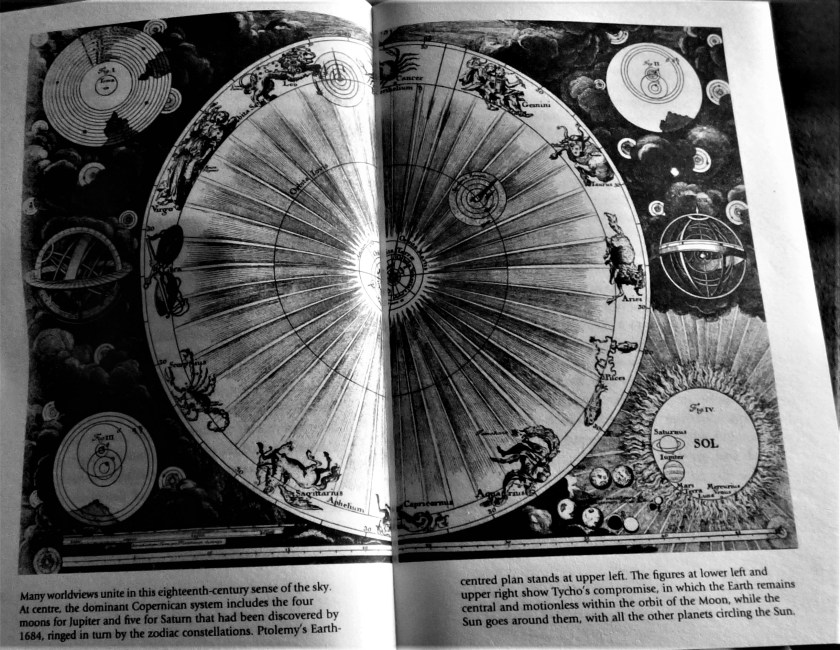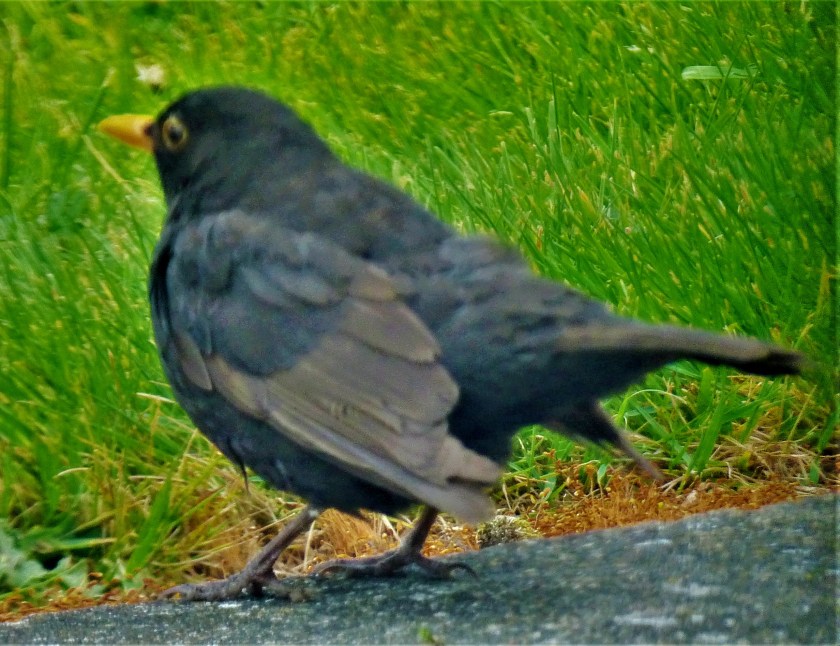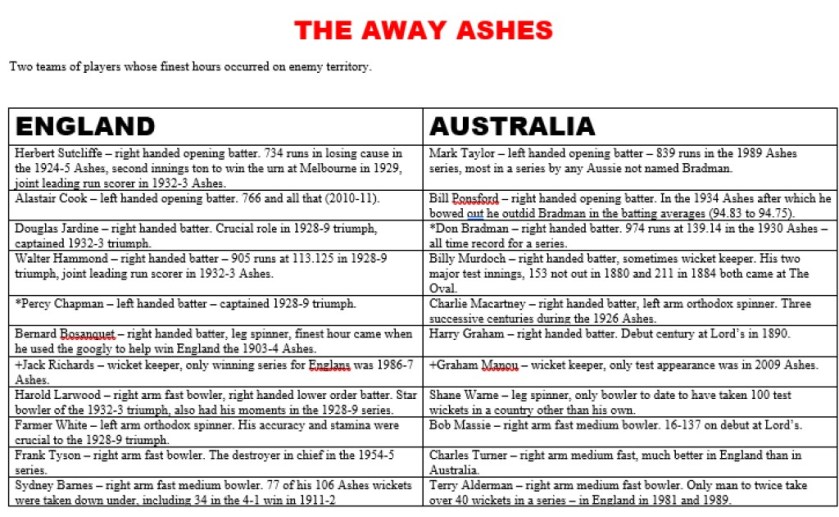INTRODUCTION
Welcome to today’s visit to ‘all time XI‘ cricket territory. Today’s variation takes its cue from the pinchhitter blog which in the course of giving me an honourable mention today suggested that I might create an XI of feuding players. This post is my answer to that suggestion.
THE BRIEF & A LEXICOGRAPHICAL NOTE
For the feuders XI I selected five pairs of cricketers known to not be buddies and who have been regular team mates plus a wicket keeper non of whose contemporaries appear to have had a good word to say about him. The word ‘Archonickname’ is of my own coinage, and appropiately for a language that has as many roots as English it too has mixed origins: the prefix ‘archo’ derives from ancient Greek – people elected to ruling offices in ancient Athens, which they could only fill for one year were known as Archons. I got the idea of using this prefix from archosaur, a grade name in palaeontology that refers to the ‘ruling reptiles’, covering dinosaurs, the air and seagoing reptiles of the same era and the crocodiles who are still with us today. Nickname of course needs no explanation, but the practice of creating a convenient new compound word as I have done is of Germanic/ Nordic origin. To bring this section to a close an ‘archonickname’ is one that implies mastery/ power. There are a couple of exceptions to this rule which I explain and (I hope) justify. Having explained the derivation and creation of the word it is time to introduce…
THE ARCHONICKNAMES XI
- Jack Hobbs – right handed opening batter, occasional right arm medium pacer. Known as ‘The Master’. He is eminently qualified for the role I have given him here.
- *WG Grace – right handed batter, right arm bowler of various types through his career, good close fielder, captain. ‘The Champion’ has an irrefutable case for inclusion, and his presence in this side also provides extra insurance that the match will be rich in incidents.
- Ted Dexter – right handed batter, right arm medium fast bowler. ‘Lord Ted’ is an ideal choice for no3 in this side, with an excellent playing record to go with his nickname.
- Viv Richards – right handed batter, occasional off spinner. Whether you prefer “King Viv” or “Master Blaster” he qualifies handsomely for this team, and his aggregate of over 8,500 test runs at 50, combined with his status as the only West Indian to record 100 first class hundreds deal with any arguments over his playing qualifications.
- Charlie Macartney – right handed batter, left arm orthodox spinner. “The Governor General” for his air of command was a magnificent attacking batter, once scoring a hundred before lunch on the first day of a test match, and had a ten wicket magtch haul at that level as well.
- Stan McCabe – right handed batter, right arm medium fast bowler. He played three of the most remarkable of all test innings, his 187 in the first innings of the 1932-3 Ashes, his 232 at Trent Bridge in the 1938 Ashes and a 189 not out against South Africa that saw his side close to chasing down an outlandishly large target – play was abandoned in that match after Herby Wade, captain of South Africa, appealed against the light, as was allowed in those days, though it was rare for a fielding side to do so. He was also good enough with the ball to be trusted with the new ball in test matches on occasion. His nickname, “Napper” derived from Napoleon, to whom certain of his team mates detected a resemblance.
- +Jack Blackham – wicket keeper, right handed batter. Dubbed the “Prince of Wicket Keepers”.
- Bart King – right arm fast bowler, right handed batter. King by name, and by nature the original ‘king of swing’, though he was never so nicknamed – I have let him on ground of his surname and the fact that someone clearly should have thought of the nickname he never acquired.
- Ashley Giles – left arm orthodox spinner, useful right handed lower order batter. “The King of Spain”, courtesy of a batch of commemorative mugs that contained a now legendary printing error – the intention of course was to dub him ‘King of Spin’.
- Herbert Hordern – leg spinner. His nickanme “Ranji” derived from the first of three Indian princes to play for England before India became a test playing nation, though sadly it was more down to his dark complexion than to a princely bearing. He was a fine bowler who hit his peak at the wrong time – seven test matches was all he got to play and they yielded him 46 wickets at 23.36.
- William Mycroft – left arm fast bowler. 863 wickets in 138 first class matches at 12.09 represent his playing qualification. I have sneaked him in by accepting the claim that he and his brother Thomas were joint inspiration for the name of Mycroft Holmes, whose btother tells as in “The Adventure of the Bruce Partington Plans” that “…you would also be right if you said that on occasion he IS the British Government.”
This team has a strong top six, a splendid keeper and four well varied bowlers. Additionally, at least four of the top six (Grace, Dexter, Macartney and McCabe) could be reasonably asked to take a turn at the bowling crease, and even Richards and Hobbs are far from being entirely negligible in that department, so I think the absence of an official all rounder is hardly crippling. This team will therefore take a considerable amount of beating. For more on nicknames in cricket check out The Cognominal Challenge.
THE FEUDERS XI
- Chris Gayle – left handed opening batter, occasional off spinner. His sparring partner appears at no5 in this order. His playing qualifications include two test match triple centuries.
- Sunil Gavaskar – right handed opening batter. His feud was with the guy who appears at no7 in this batting order. He was the first ever to top 10,000 test runs, and 13 of his 34 test centuries came at the expense of the West Indies, the best in the world for much of his career.
- Kevin Pietersen – right handed batter, occasional off spinner. A playing record that includes a test averahe not far short of 50, and the second most significant ever innings of 158 (at The Oval in 2005). His dismissal of ‘Pup’ Clarke at the end of the penultimate day of the Adelaide test of 2010 helped ensure that England would secure the victory they deserved. His sparring partner appears at no 8 in this order.
- *Steve Waugh – right handed batter, occasional right arm medium pace bowler, captain. 168 test matches and an average of over 50 qualify him in playing terms, and his sparring partner is at no 9 in this order.
- Ramnaresh Sarwan – right handed batter, occasional off spinner. A heavy scoring batter during what was generally a poor period for the West Indies. Chris Gayle’s enemy.
- Wasim Akram – left arm fast bpwler, left handed batter. A magnificent international record, although no6 is possibly a place too high for him. His sparring partner is at no11, which completes our introduction of the feuding pairs
- Kapil Dev – right arm medium fast bowler, right handed batter. The only player to have scored over 5,000 test runs and taken over 400 test wickets. His sometimes fractious relationship with Gavaskar reflected a historic source of tension in Indian cricket, between Mumbai (Gavaskar) and the north (Kapil, “The Haryana Hurricane”).
- Graeme Swann – off spinner, useful right handed lower order batter. Pietersen’s ‘reverse buddy’, and the best front line spinner England have had in my lifetime.
- Shane Warne – leg spinner, useful right haned lower order batter. Steve Waugh’s frenemy. His record needs no further comment.
- +William ‘Barlow’ Carkeek – wicket keeper, left handed batter. None of his contemporaries appear to have a good word to say about him – from what Gideon Haigh says about him in “The Big Ship”, a biography of Warwick Armstrong there would appear to have been a cloud over his personal life. His brief test career, in 1912 when Australia were riven by internal bickering, saw him average just six with the bat, and his keeping was ujniversally reckoned to be way below the standards set by the likes of Blackham, Jim Kelly and Hanson Carter (a Yorkshire born Aussie for those interested in players with a foot in each camp).
- Waqar Younis – right arm fast bowler. Regular bowling and sparring partner of Wasim Akram. Note that for all that country;s reputation for internal bickering there is only one pair of Pakistanis in the eleven.
This team has a strong front five, two genuine all rounders, three excellent and varied bowlers and a keeper who did play test cricket. The main bowling, with Wasim, Waqar and Kapil to bowl varieties of seam/swing/pace and spin twins Warne and Swann looks pretty good as well. In feuding terms the line up is: Gayle/ Sarwan, Gavaskar/ Kapil Dev, Pietersen/ Swann, Waugh/ Warne and Wasim/Waqar, with a universally despised keeper in Carkeek to fill out the XI. A quick dishonourable mention: I could also have got round 11 being an odd number by including the Westralian feuding trio of Kim Hughes, Rod Marsh and Dennis Lillee (see “Golden Boy” for more details), but preferred my actual combination.
THE CONTEST
The contest for what I dub the “Bradman-Jardine” trophy in honour of a famous pair who did not see eye-to-eye, but as opponents could be expected not to (besides which Bradman’s inclusion would bias things in favour of his side) promises to a fine and very spicy one. If the Feuders XI could bury their differences for long enough they would definitely have a chance, but overall I think that the odds firmly favour the Archonicknames XI. I suggest Dickie Bird and Frank Chester as on-field umpires, with Aleem Dar as TV Replay umpire, and the only match referee who could conceivably handle this one is Clive Lloyd (best of luck – you will need it).
TEASER AND PHOTOGRAPHS
I have introduced my two teams, hopefully justified my selectorial decisions and unveiled the ‘Bradman-Jardine’ trophy, but before I bring the curtain down on this post I share a teaser from brilliant.org:
And now it is time for my usual sign off – my little bit of garden is proving in this fine weather to be an excellent location for photography:




